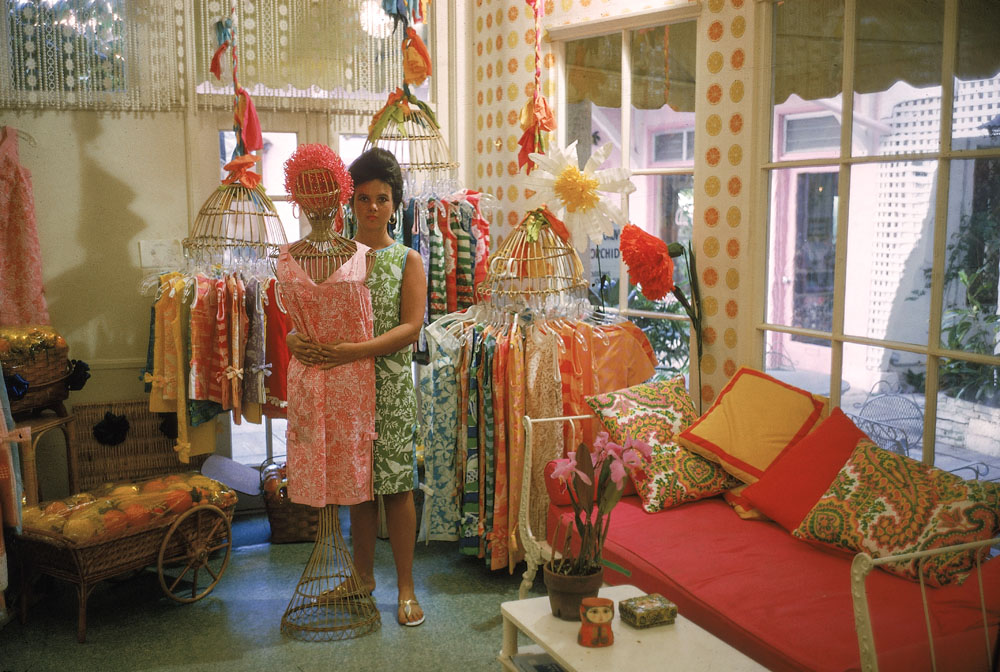The Lilly Pulitzer Shift Dress Was Designed for Juice Stains & Comfort
This is the story of a dress inspired by a nervous breakdown, orange groves, and the scorching Florida heat

This is the story of a dress inspired by a nervous breakdown and juice stains. Lillian (Lilly) McKim was born into wealth, the daughter of a Standard Oil heiress. In 1952, at the age of 21, she eloped with Peter Pulitzer, grandson of the publisher Joseph Pulitzer, and moved to Florida, where Pulitzer owned several orange groves.
The attractive couple was known for their fun parties, where Lilly often poured water on the floors to promote dancing. The Palm Beach socialite was something of an anomaly known for walking down Worth Avenue barefoot with her pet monkey, Goonie, on her shoulder. The Pulitzers had three children in under four years, which took a toll on Lilly. She sought treatment for what we would now call postpartum anxiety/depression. After being carefully evaluated by her doctor, she was told that there was absolutely nothing wrong with her, but she needed to find a hobby. Her husband suggested she help sell some of the citrus from their groves, so she opened a juice stand with her dear friend and former fashion editor Laura Clark in 1959.
After a day working at the stand, her clothes were often stained with orange and grapefruit juice. She bought some fabric from the five-and-dime store that would camouflage the stains and asked her seamstress to create a couple of dresses. Lily requested that they be lined, so she could wear the dress without undergarments, and not be fitted, so she could stay comfortable and cool while working at the stand in the Florida heat. The design was simple, featuring two seams, a few darts, and a slit to allow for easy movement. Juice stand customers soon wanted to know where they could purchase their own bright-colored frocks. She began selling her shift dresses, which became known simply as “Lillys,” at the stand for $22. When her friend from high school, First Lady Jackie Kennedy, wore a Lilly dress on the cover of Life magazine in 1962, the company rose to fame. The dresses were unlike the corseted-waisted designs most women were wearing in the late 1950s and early 1960s, the Lilly represented the ease and carefree nature of resort living.
Lilly’s juice stand turned into a clothing business. Soon she needed better textiles. She found a pattern that fit her style and traced the designer back to the small fabric printing business Key West Hand Prints. The designer’s name was Susie Zuzek, and over the next 23 years, Zuzek created over 1,550 designs, most of which were used by Pulitzer. Lilly added her signature to each print. The “Lilly Look” was synonymous with wild, bright, colorful prints, the products of Zuzek and Lilly’s collaboration.
Lilly Pulitzer’s trademark shift dress became a wardrobe classic not only worn by the wealthy in Palm Beach but also by those who vacationed in Nantucket, Martha’s Vineyard, Southhampton, and Bar Habor. The design was simple but sophisticated. “‘The Lilly’ doesn’t really follow trends,” Lilly Pulitzer said in an interview in April of 1978. “It has become a kind of classic after all these years, kind of on the order of a Chanel suit. It doesn’t change, you can always recognize one.”
Lilly Pulitzer died in 2013, having sold the company years before. One thing that has not changed is that the iconic prints are still a staple in many wardrobes, and the iconic shift dress is as popular as ever.